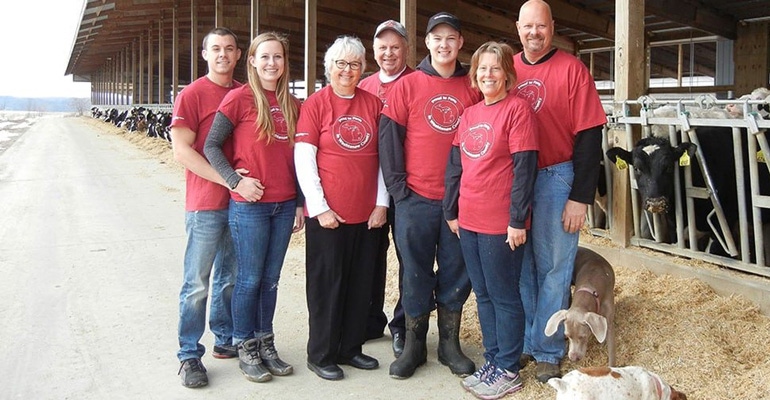October 30, 2019

A new Journal of Animal Science study shows U.S. dairy farmers have excelled in production efficiency, so much so that the environmental footprint to produce a gallon of milk has shrunk significantly since 1944. Production now uses 90% less land and 65% less water, while leaving a 63% smaller carbon footprint per gallon of milk.
More importantly, the trend of production efficiencies and reduced environmental effects has accelerated in the past 10 years. That is based on a recently updated analysis of a 2007 study, which concluded that greenhouse gas (GHG) emissions to produce a gallon of milk dropped nearly 20% over the 10-year period from 2007 to 2017.
Laura Campbell, manager of Michigan Farm Bureau’s Ag Ecology Department, says the recently updated study confirms what most Michigan farmers already know firsthand.
“Ongoing scientific research and improvements in genetics, animal nutrition, herd health management, and ongoing advancements in crop production efficiencies have allowed dairy farmers to produce more with less,” Campbell says. “Unfortunately, that indisputable fact is often lost on the average consumer.”
Campbell says the Journal of Animal Science published a study in 2009, “The environmental impact of dairy production: 1944 compared with 2007,” by lead author, Dr. Jude Capper, and collaborators Drs. Roger Cady and Dale Bauman.
At the request of the Journal of Animal Science, two of the original authors, Capper, a livestock sustainability consultant, and Cady, principal of Cady Agricultural Sustainability Specialties, performed a follow-up assessment to measure the subsequent progress made in the U.S. dairy sector from 2007 to 2017.
The results, Campbell says, show that the resources needed to produce the same amount of milk, field to farm gate, were significantly lower in 2017 than in 2007.
In 2017, producing a unit of milk required:
74.8% of the cows needed in 2007 for the same amount of milk, a 25.2% reduction
82.7% of the feedstuffs needed in 2007 for the same amount of milk, a 17.3% reduction
79.2% of the land needed in 2007 for the same amount of milk, a 20.8% reduction
69.5% of the water needed in 2007 for the same amount of milk, a 30.5% reduction
GHG emissions per unit of milk in 2017 were 80.8% of equivalent milk production in 2007, a 19.2% reduction. There also was a reduction in the amount of waste produced in 2017 versus 2007.
In 2017, producing a unit of milk required:
79.4% of the manure produced in 2007, a 20.6% reduction
82.5% of the nitrogen excreted in 2007, a 17.5% reduction
85.7% of the phosphorus excreted in 2007, a 14.3% reduction
Although total milk production in the U.S. increased by 24.9% between 2007 and 2017, the total greenhouse gas emissions from milk increased by only 1%, according to this study.
Source: Michigan Farm Bureau, which is solely responsible for the information provided and is wholly owned by the source. Informa Business Media and all its subsidiaries are not responsible for any of the content contained in this information asset.
You May Also Like




